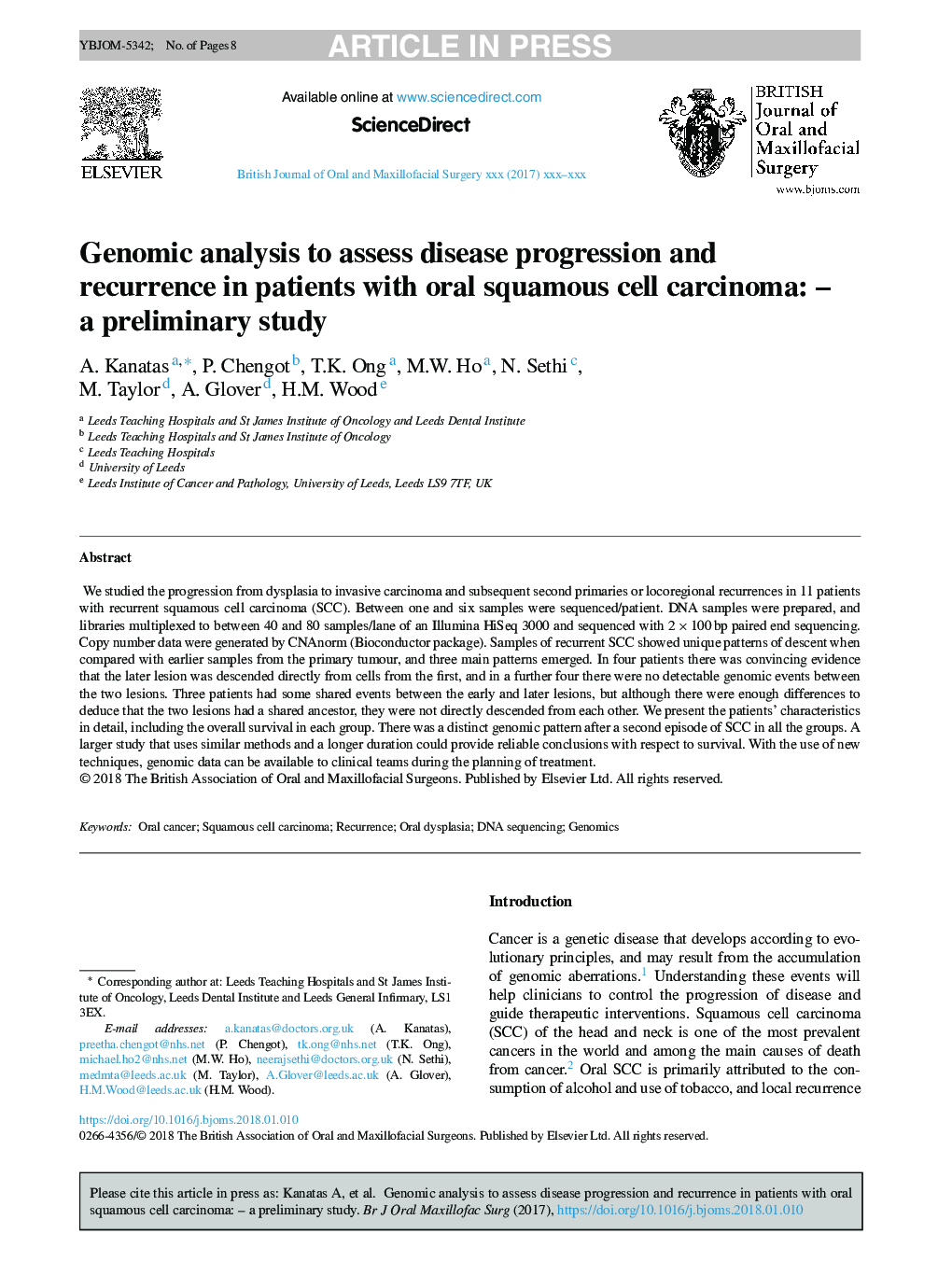| Article ID | Journal | Published Year | Pages | File Type |
|---|---|---|---|---|
| 8696774 | British Journal of Oral and Maxillofacial Surgery | 2018 | 8 Pages |
Abstract
We studied the progression from dysplasia to invasive carcinoma and subsequent second primaries or locoregional recurrences in 11 patients with recurrent squamous cell carcinoma (SCC). Between one and six samples were sequenced/patient. DNA samples were prepared, and libraries multiplexed to between 40 and 80 samples/lane of an Illumina HiSeq 3000 and sequenced with 2Â ÃÂ 100Â bp paired end sequencing. Copy number data were generated by CNAnorm (Bioconductor package). Samples of recurrent SCC showed unique patterns of descent when compared with earlier samples from the primary tumour, and three main patterns emerged. In four patients there was convincing evidence that the later lesion was descended directly from cells from the first, and in a further four there were no detectable genomic events between the two lesions. Three patients had some shared events between the early and later lesions, but although there were enough differences to deduce that the two lesions had a shared ancestor, they were not directly descended from each other. We present the patients' characteristics in detail, including the overall survival in each group. There was a distinct genomic pattern after a second episode of SCC in all the groups. A larger study that uses similar methods and a longer duration could provide reliable conclusions with respect to survival. With the use of new techniques, genomic data can be available to clinical teams during the planning of treatment.
Related Topics
Health Sciences
Medicine and Dentistry
Dentistry, Oral Surgery and Medicine
Authors
A. Kanatas, P. Chengot, T.K. Ong, M.W. Ho, N. Sethi, M. Taylor, A. Glover, H.M. Wood,
